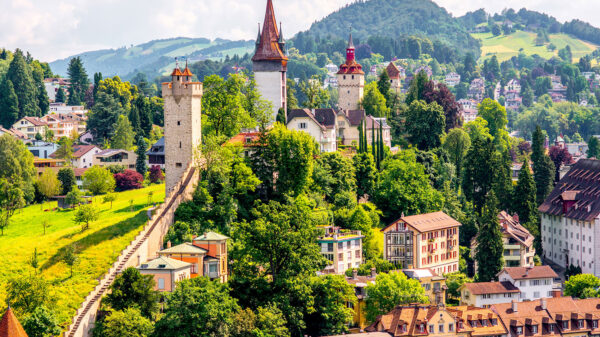History enthusiasts can definitely find solace in places like Delhi, the nation’s capital, offering a perfect blend of historical and aesthetic beauty. Monuments like Humayun’s Tomb and Amrit Udayan are laudable, but there are other treasures to discover in Delhi that possess mesmerising beauty. Today, in this blog, I will talk about Purana Qila, one of the oldest monuments in our country. The place is interesting in its own right, with stories and anecdotes that make it even more enchanting and a must-see destination.
location

Purana Qila (Old Fort) is located in the heart of New Delhi, near the eastern edge of the city centre. It is situated close to India Gate and southeast of the National Zoological Park. The exact address is Mathura Road, near Pragati Maidan, New Delhi, Delhi 110003, India.
History
The Old Fort, once called Dinpanah, was built by Mughal Emperor Humayun in 1533. However, it was later captured by Sher Shah Suri, who made several enhancements to its structures. Despite being associated with two notable rulers, it is considered “unlucky” due to the untimely deaths of both monarchs after capturing it. Nevertheless, visitors continue to enjoy the site despite its troubled past.
The location where the Old Fort now stands has a long history of human habitation, dating back to the ancient city of Indraprastha. References to a fort belonging to the Pandavas and Kauravas prior to the Old Fort can be found in detailed administrative documents from Emperor Akbar’s reign, such as the Ain-E-Akbari. Previous excavations have uncovered remnants of various cultures predating the Mughals.
Architecture
The main entrance, also called the “Bada Darwaza” or Giant Door, showcases both beauty and strength in its medieval architecture, welcoming visitors while providing protection against attacks. The intricate Jharokas, or cantilevered enclosed openings, along with extended pavilions, add to the entrance’s allure.
Another entrance, the “Talaki Gate,” often referred to as the “forbidden gate,” holds historical significance as it is believed that Sher Shah Suri departed for battle from this gate and never returned. Similar to the Bada Darwaza, it features elements reminiscent of Rajasthan forts. Additionally, there’s the “Humayun Gate,” possibly named for its view of Humayun’s tomb.
The Qile-E-Kuhna mosque, constructed in 1541 by Sher Shah, stands as a masterpiece of mediaeval architecture within the Old Fort. Its rear side boasts an octagonal turret with two stories, crafted from red and yellow sandstone, adorned with beautiful arch openings and designs. The front façade is adorned with intricate carvings on red sandstone, white marble, and tiles, including lotus bud designs along the arch boundaries. The interior is equally stunning, with carved spandrels and small openings allowing sunlight into the mosque.
The Sher Mandal, a two-story octagonal structure built from red sandstone and decorated with white marble, was initially a pleasure retreat for Sher Shah but later converted into a library by Humayun. It is renowned among historians for the tragic death of Humayun, who reportedly fell from its stairs.
Opposite the Sher Mandal are the remains of the ancient bathhouse, known as the “Hamam,” where important administrative decisions were made. This place, akin to a modern-day spa, offered various rejuvenating treatments for better health.
The monuments within the Old Fort are captivating, and visitors are sure to be enchanted by their beauty and historical significance.
Some interesting facts about
1). Purana Qila is Delhi’s oldest known structure, over 5000 years old.
2)Until 1913, the fort contained a village called Indrapat.
3)ASI discoveries include a rare 12th-century Vishnu sculpture and Gupta period terracotta seals.
4)The fort’s walls are 20 metres tall and 4 metres thick, with inner and outer walls and a water body between them for defence.
5)Inside the fort, there is a museum displaying various Mughal artefacts and statues.
6)A captivating light and sound show depicting Mughal history is available but often overlooked by visitors.
7)Visitors can enjoy boating along the fort’s outskirts, once home to crocodiles.
How to reach?
To reach Purana Qila (Old Fort) in Delhi, you can use various modes of transportation:
By Metro: The nearest metro station to Purana Qila is Pragati Maidan on the Blue Line. From there, you can take a short taxi ride or walk to reach the fort.
By Bus: Several buses ply to Purana Qila from different parts of Delhi. You can use apps like Google Maps or Delhi Transport Corporation’s (DTC) website to find the most convenient bus route.
By Car/Taxi: You can drive or take a taxi directly to Purana Qila. The fort is located near the India Gate, and you can use GPS navigation for directions.
By Auto-rickshaw: Auto-rickshaws are a popular mode of transportation in Delhi and can take you to Purana Qila from nearby areas.
Once you reach the vicinity of Purana Qila, you can easily spot the entrance to the fort and explore its historical significance.…
Final thoughts
From both architectural and historical perspectives, this place offers a wealth of vibrant monuments that will mesmerise you with their beauty. The anecdotes and historical legacy associated with these monuments add an intriguing allure to the experience. I genuinely believe that this place is a must-visit destination, especially for history enthusiasts seeking places that transcend time











